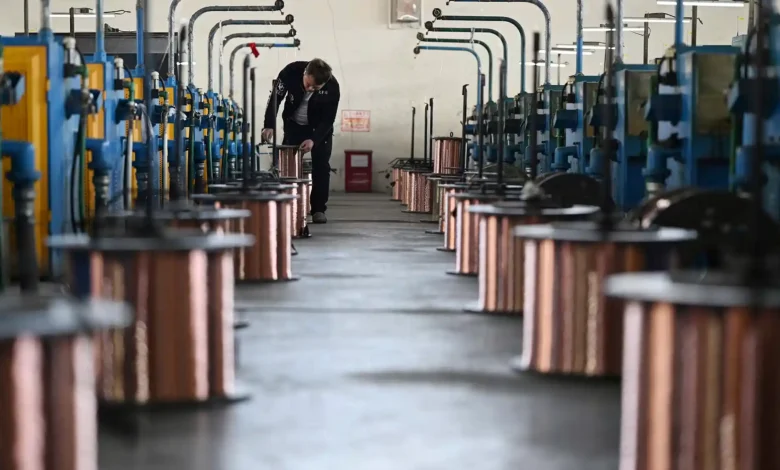
The political and economic landscape just received another shake-up following former President Donald Trump’s bold announcement of a 50% tariff on copper imports.
Further intensifying the debate, he has also threatened a potentially staggering 200% tariff on pharmaceutical goods.
These measures are already sparking heated discussions among economists, industry leaders, and everyday Americans. Here’s what you need to know.
What Are the New Tariffs and Why Are They Significant?
50% Tariff on Copper Imports
Copper, a critical material used in industries ranging from construction to electronics, is now at the center of the tariff storm. By imposing a high tariff on imported copper, Trump aims to bolster U.S.-based mining and manufacturing industries, advocating for a renewed focus on domestic production.
But questions about potential economic impacts loom large. Experts predict that such a tariff could:
- Drive up the prices of products relying on copper, such as wiring, plumbing systems, and consumer electronics.
- Shift manufacturing costs to consumers, especially in industries sensitive to material price changes.
- Spark retaliatory measures from copper-exporting countries, potentially escalating into trade tensions.
200% Tariff on Pharmaceuticals
The pharmaceutical industry seemed to be the next target, with Trump threatening a hefty 200% tariff on imported medicines. While presented as a strategy to spur domestic drug manufacturing and reduce reliance on foreign pharmaceutical imports, critics worry about the broader consequences.
A tariff of this size could:
- Exponentially increase medication costs for American consumers, making lifesaving drugs less accessible.
- Impact healthcare providers who depend on affordable imported pharmaceuticals to treat patients effectively.
- Send shockwaves through international trade relationships, particularly with countries leading global drug manufacturing.
What’s Driving These Tariff Decisions?
Trump’s approach aligns with his long-standing “America First” policy—an effort to reduce dependence on global supply chains and revitalize domestic industries. The former president argued that these bold moves are designed to protect American jobs while ensuring the U.S. retains strategic control over its essential resources.
However, critics argue that such changes come at a high cost, particularly to small businesses and working-class families. There’s also skepticism about whether the U.S. has the infrastructure and workforce to meet the sudden demand for locally manufactured alternatives in both industries.
Immediate Industry Reactions
Copper Industry Response
The global copper industry is watching closely as copper-exporting giants like Chile and Peru brace for reduced market access. Domestically, U.S. copper producers are anticipating a surge in demand, but others in manufacturing are concerned about rising production costs.
Pharmaceutical Industry Response
Pharmaceutical companies and healthcare advocates are raising alarms around patient access and affordability. Many argue that a 200% tariff could cripple efforts to make vital medications affordable, especially for conditions requiring specialized treatments.
Broader Implications for Consumers and Businesses
For Americans, these tariffs could impact everything from home improvement projects to prescription drug costs. While the promise of more American jobs is enticing, will the benefits outweigh the price hikes that consumers may face? Small businesses reliant on copper products and imported pharmaceuticals could also feel the strain.
The Global Trade Fallout
International trade experts anticipate potential retaliatory tariffs from affected countries, which could escalate into a broader trade war. Copper-exporting nations and pharmaceutical manufacturers may explore partnerships with other regions, bypassing the U.S. altogether.
What’s Next?
While specific timelines for these tariffs were not disclosed, the announcement has stirred a sense of urgency among industries. Affected businesses are eager for further clarification and guidance on how to prepare for this significant policy shift.
For now, this sweeping decision has raised the stakes on conversations about self-reliance in strategic industries versus the risks of exacerbating economic challenges for average Americans.
Further Reading
Looking to dig deeper into the specifics of these tariff proposals? Read bloomberg for insights from leading trade experts.
Final Thoughts
Trump’s announcement of tariffs on copper and pharmaceuticals signals yet another chapter in the ongoing debate over global trade policy and economic nationalism.
While supporters tout these tariffs as a necessary move for restoring American strength, the long-term ripple effects are yet to be seen.
For businesses and consumers alike, one thing remains certain—these potential changes will reshape the economic conversation in the coming months.
Read More: Smart Homes Using AI in India Opening Up New Possibilities




